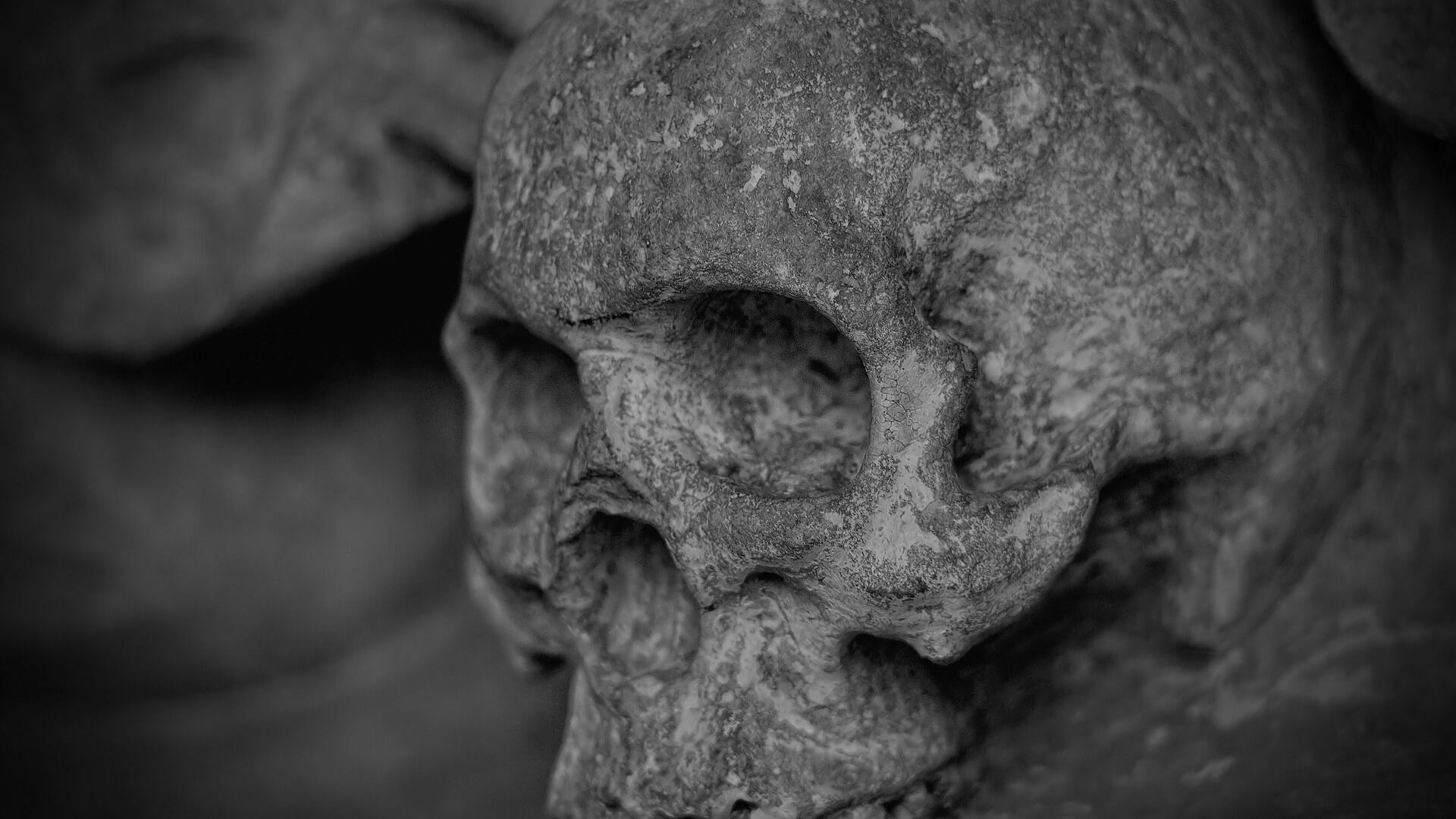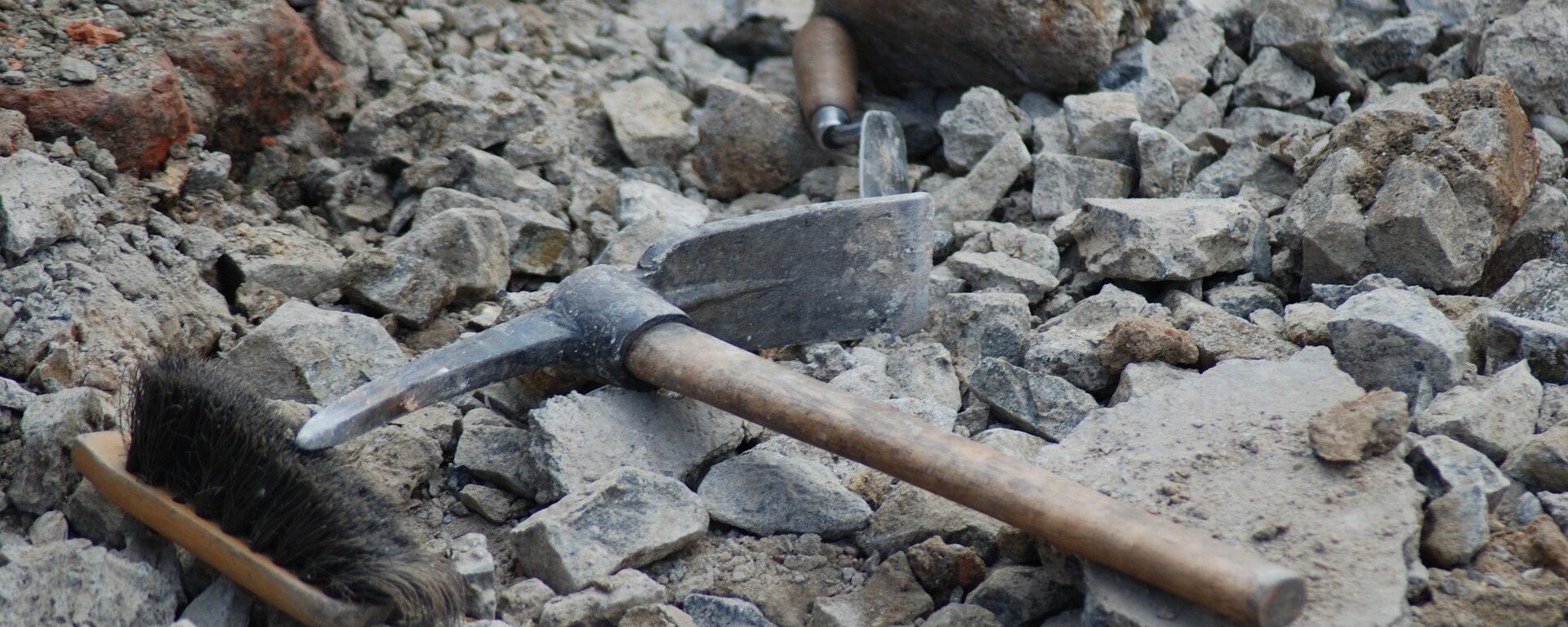https://sputnikglobe.com/20210826/researchers-excavate-parts-of-ancient-womans-skeleton-that-reveals-shocking-facts-1083715482.html
Researchers Excavate Parts of Ancient Woman’s Skeleton That Reveals Shocking Facts
Researchers Excavate Parts of Ancient Woman’s Skeleton That Reveals Shocking Facts
Sputnik International
The fossil excavated by the archaeologists mainly came from the skull and pelvis. The researchers extracted the DNA from a dense bone in the base of the skull... 26.08.2021, Sputnik International
2021-08-26T17:54+0000
2021-08-26T17:54+0000
2022-10-19T20:18+0000
newsfeed
world
humans
evolution
excavations
archaeology
https://cdn1.img.sputnikglobe.com/img/107797/98/1077979841_0:100:1921:1180_1920x0_80_0_0_ef36f5046d863818d576caa30566c3ae.jpg
Parts of the ancient skeleton of a woman excavated by Indonesian archeologists from South Sulawesi’s Leang Panninge cave has revealed some surprising facts about the population history of early modern humans.After analysing the woman's DNA, population geneticist Selina Carlhoff of the Max Planck Institute for the Science of Human History in Jena, Germany, archaeologist Adam Brumm of Griffith University in Brisbane, Australia, Cosimo Posth of the University of Tübingen in Germany, Indonesian archaeologists, and other colleagues discovered that it is the first indication that Asian ancestry was present in Wallacea long before the Austronesian expansion.The team of archaeologists from Indonesia excavated the remains of the woman between 2015 and 2019. Until now, it was believed that Austronesians who were skilled mariners and farmers first spread East Asian genes through Wallacea - a group of islands between mainland Asia and Australia that includes Sulawesi, Lombok, and Flores - around 3,500 years ago. However, this woman's DNA shows that she had an ancient East Asian pedigree, mixed with Denisovan ancestry.According to the researchers, the woman was a descendant of mainly East Asian Homo sapiens who most likely arrived at the tropical outpost at least 50,000 years ago. She was probably 17 or 18 years old when she died. The Indonesian archaeologists who unearthed the skeleton nicknamed the remains 'Besse'. The team reported their finding in the journal Nature that came out on Wednesday.The team suspects that the woman's ancestors, after arriving at Sulawesi, may have mated with Denisovans who already inhabited the island. The Denisovans are an extinct species or subspecies of archaic humans that ranged across Asia during the Lower and Middle Palaeolithic period.The researchers estimated that the woman carried about 2.2 percent of her DNA from Denisovans. Surprisingly, this percentage of inheritance is a bit less than some other groups in the region. In previous studies, it was stated that different Denisovan populations interbred with Homo sapiens groups in the Philippines.The scientists also said that the woman's DNA resembles that of present-day Papuans and indigenous Australians more closely than any modern mainland East Asians. It indicates that she belonged to a previously unknown, distinct genetic line of humans that emerged around 37,000 years ago. It is estimated that around the same period, the evolutionary split occurred between Papuans and indigenous Australians."Carefully crafted stone points that had been placed in the ancient woman’s grave identify her as a member of South Sulawesi’s Toalean hunter-gatherer people. Toalean stone artifacts date to between roughly 8,000 and 1,500 years ago. Evidence of Toalean culture disappears after that," archaeologist Adam Brumm of Griffith University in Brisbane, Australia said.
https://sputnikglobe.com/20200617/archaeologists-discover-ancient-roman-temple-hidden-underground-without-conducting-excavation-1079643391.html
Sputnik International
feedback@sputniknews.com
+74956456601
MIA „Rossiya Segodnya“
2021
Sushmita Panda
https://cdn1.img.sputnikglobe.com/img/07e5/05/12/1082926186_0:0:2048:2048_100x100_80_0_0_4474d0d7e27a36878eb8727832be74b4.jpg
Sushmita Panda
https://cdn1.img.sputnikglobe.com/img/07e5/05/12/1082926186_0:0:2048:2048_100x100_80_0_0_4474d0d7e27a36878eb8727832be74b4.jpg
News
en_EN
Sputnik International
feedback@sputniknews.com
+74956456601
MIA „Rossiya Segodnya“
Sputnik International
feedback@sputniknews.com
+74956456601
MIA „Rossiya Segodnya“
Sushmita Panda
https://cdn1.img.sputnikglobe.com/img/07e5/05/12/1082926186_0:0:2048:2048_100x100_80_0_0_4474d0d7e27a36878eb8727832be74b4.jpg
newsfeed, humans, evolution, excavations, archaeology
newsfeed, humans, evolution, excavations, archaeology
Researchers Excavate Parts of Ancient Woman’s Skeleton That Reveals Shocking Facts
17:54 GMT 26.08.2021 (Updated: 20:18 GMT 19.10.2022) The fossil excavated by the archaeologists mainly came from the skull and pelvis. The researchers extracted the DNA from a dense bone in the base of the skull that’s known to preserve genetic material properly. Meanwhile, radiocarbon dating of a burnt seed found near the skeleton gave an estimated age of 7,000 years.
Parts of the ancient skeleton of a woman
excavated by Indonesian archeologists from South Sulawesi’s Leang Panninge cave has revealed some surprising facts about the population history of early modern humans.
After analysing the woman's DNA, population geneticist Selina Carlhoff of the Max Planck Institute for the Science of Human History in Jena, Germany, archaeologist Adam Brumm of Griffith University in Brisbane, Australia, Cosimo Posth of the University of Tübingen in Germany, Indonesian archaeologists, and other colleagues discovered that it is the first indication that Asian ancestry was present in Wallacea long before the Austronesian expansion.
The team of archaeologists from Indonesia excavated the remains of the woman between 2015 and 2019. Until now, it was believed that Austronesians who were skilled mariners and farmers first spread East Asian genes through Wallacea - a group of islands between mainland Asia and Australia that includes Sulawesi, Lombok, and Flores - around 3,500 years ago. However, this woman's DNA shows that she had an ancient East Asian pedigree, mixed with Denisovan ancestry.
According to the researchers, the woman was a descendant of mainly East Asian Homo sapiens who most likely arrived at the tropical outpost at least 50,000 years ago. She was probably 17 or 18 years old when she died. The Indonesian archaeologists who unearthed the skeleton nicknamed the remains 'Besse'. The team reported their finding in the journal
Nature that came out on Wednesday.
The team suspects that the woman's ancestors, after arriving at Sulawesi, may have mated with Denisovans who already inhabited the island. The Denisovans are an extinct species or subspecies of archaic humans that ranged across Asia during the Lower and Middle Palaeolithic period.
The researchers estimated that the woman carried about 2.2 percent of her
DNA from Denisovans. Surprisingly, this percentage of inheritance is a bit less than some other groups in the region. In previous studies, it was stated that different Denisovan populations interbred with Homo sapiens groups in the Philippines.
"The Sulawesi woman’s DNA indicates that interbreeding occurred in Wallacea as some Stone Age H. sapiens made their way toward Papua New Guinea and Australia. The major gene flow from Denisovans into ancestors of Papuans and Aboriginal Australians most likely took place once [H. sapiens] reached the Wallacea islands,” Cosimo Posth, a population geneticist and the study's co-author, said.
The scientists also said that the woman's DNA resembles that of present-day Papuans and indigenous Australians more closely than any modern mainland East Asians. It indicates that she belonged to a previously unknown, distinct genetic line of humans that emerged around 37,000 years ago. It is estimated that around the same period, the evolutionary split occurred between Papuans and indigenous Australians.
"Carefully crafted stone points that had been placed in the ancient woman’s grave identify her as a member of South Sulawesi’s Toalean hunter-gatherer people. Toalean stone artifacts date to between roughly 8,000 and 1,500 years ago. Evidence of Toalean culture disappears after that," archaeologist Adam Brumm of Griffith University in Brisbane, Australia said.




